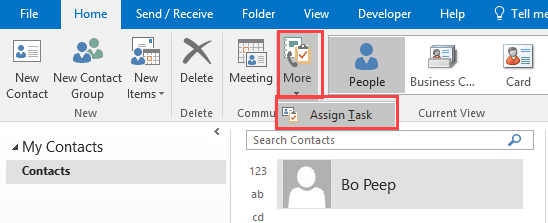

- #How to use tasks in outlook free
- #How to use tasks in outlook mac
- #How to use tasks in outlook windows
The two are nearly identical, but each has its own best use.
#How to use tasks in outlook windows
The former exists in both Windows and Mac, the latter only in Windows. One I call a scheduled recurring task, and the other I call an interval-since-completion recurring task. Probably the most confusing aspect of Outlook recurring tasks is that, in Windows, there are really two kinds of recurring tasks, and understanding the difference between them can be confusing.

#How to use tasks in outlook mac
Two Kinds of Recurring Tasks in Windows Outlook, One in Mac Outlook Otherwise, recurring tasks are an excellent tool to use with MYN. Rather, be sure to fully delete and then fully reenter the tasks then they will work fine with MYN. And don’t just try to edit them by adding the start date-that won’t work either. And if you want to convert them to being start-date tasks, you need to delete and reenter those tasks as start-date based tasks. But if you already have recurring tasks in your Outlook system that are based on due dates (or have no dates), they do not work with MYN Outlook configurations. If you create new recurring tasks (created with a start date) all is fine. The MYN Outlook system, as you may know, focuses on the start date of tasks, not the due date. There is one thing to be aware of, however, if you are just now starting the MYN system in Outlook. And they only reappear when they are next needed they then pop into the top of the MYN task list at just the right time. In the MYN list, when you mark them complete, they disappear (they don’t in normal Outlook). In fact, I think they work even better in the MYN-configured Outlook task list than in the out-of-box Outlook task setting. Recurring tasks in Outlook work perfectly with the MYN system. It provides a lot of flexibility and power. Outlook’s implementation of recurring tasks is quite well done. So they are a convenient way to keep a repeating task on track without burdening your task list with a long list of future tasks. Unlike repeating appointments, however, future instances of recurring tasks are not placed in your task list until the previous one is marked complete or deleted.


You can cause that task to recreate itself every Monday morning in your Outlook tasks list. You can make any existing task into a recurring task by simply using the Recurrence button at the top of the task window.Īn example of why you would create them might be a Monday status report that is due each week.
#How to use tasks in outlook free
Then every member in the SG will receive an email, if they click Accept in the email, the task will appear in their ownįeel free to let us know if anything is unclear.Recurring tasks are a type of task in Outlook that allows you to create a task once, and then have it recreated automatically after a designated time interval. Assign the created task to the security group above.Ĥ. Create a task under the shared mailbox’s Tasks.ģ. However, based on my personal experience, if your goal is to let the 3 users see the same tasks, please try the following steps to see if it can be a workaround:Ĭreate a security group and then put the 3 users into the created SG as members (this needs to be done by an Office 365 administrator).Ģ. Providing your feedback is the best way to perfect our products and services. Given the situation, we recommend you submit feedback to our related team via: As a result, other members in the shared mailbox cannot see the flagged email. If you flag an email in the shared mailbox, the email won’t appear in either To-Do List instead of your mailbox’s Tasks. Generally, if you flag an email in our primary mailbox, the email should appear in the It’s not feasible to achieve your goal in Exchange Online services.


 0 kommentar(er)
0 kommentar(er)
